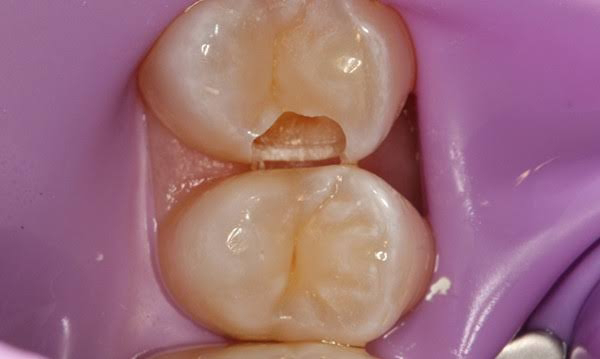OVERCONSERVATISM IN DENTISTRY: THE MINIMALISTIC APPROACH
Dentistry is the science of oral tissues
and their supporting structures. Over the period of time, the field of
dentistry has undergone several changes, and science has evolved significantly.
Currently, science is in the era of a minimalistic approach or
over-conservatism, which is being advocated vastly.
Over conservatism or Minimal intervention dentistry (MID)
adopts a philosophy that
integrates prevention, remineralization and minimal intervention for the
placement and replacement of
restorations. The objective is tissue
preservation by performing treatment with as little tissue loss as possible.
With the new techniques available, we can aim for both an early diagnosis and
a minimally invasive therapy.
The minimally invasive approach in treating
dental diseases incorporates the dental
science of detecting, diagnosing,
intercepting and treating at the
microscopic level. This approach has
evolved from an increased understanding of the
process and the development of
various restorative materials. Now no
longer radical "extension
for prevention" is practiced
but has changed
to "constriction with conviction".
In over conservatism or MID following
principles need to be followed :
●
Control the
disease through reduction of bacterial flora.
●
Remineralise early
lesions if dental decay is there
●
Perform minimal
intervention surgical procedures,
as required.
●
Repair,
rather than replace defective restorations.
There are several avenues in MID which are
practised today. These include:
- Chemicomechanical
caries removal
- Air abrasion
- Ultrasonics
- Ozone therapy
- Lasers
- Pit and
fissure sealants
- Conservative
access openings
- Inlays and
outlays
- Bite splints
- Remineralizing
agents
- Microsurgery
- Aligners
Let's discuss
some of these avenues to get a clearer picture about over conservatism in
dentistry.
The MID approach for treating dental decay
includes use of chemomechanical techniques, which includes the chemical
softening of carious
dentin followed by its removal
by gentle excavation. Air abrasion is a drill-less
technique to remove dental decay. Here
aluminium oxide particles are produced under compression. Ultrasonics are a
more conservative approach to cavity preparation by not excising the dental
tooth structure but by abrading the dentin. Recently sonoabrasion has been
developed which selectively prepares the enamel and dentin. Ozone therapy
causes remineralisation of
incipient pit and fissure
caries as well
as incipient root
caries. Ozone readily penetrates through decayed
tissue, eliminating any
bacteria, fungi and
viral contamination, it would
be expected that
this 'clean' lesion
would remineralise. Lasers
are found to
be effective in
cavity preparation, caries
removal, restoration
removal, etching and
treatment of dentinal
sensitivity, caries
prevention and bleaching.
Remineralisation is the process of
restoring the lost minerals due to demineralization caused by dietary acids.
Fluorides, toothpastes, mouthwashes, gums with xylitol are used for it. The two
latest technologies in the area are of using two different kinds of bioactive
glass called Novamin and Biomin.
Pit and fissure sealants are the best way
to protect your molars or chewing teeth from decay. Here a plastic coating is
applied on these back teeth in the pits and grooves where the food can get
stuck and cause decay later on. Thus due to the coating, there is no sticking
of the food and no decay.
The bite splints are a hard plastic wafer
that protect your teeth from damage due to teeth grinding. Also use of tunnel
preparation for proximal caries is very conservative.
Nowadays also for root canal treatments
instead of conventional openings to gain access, more conservative approaches
are used. The MID approach saves tooth structure and at the same time provides
straight-line access, the ability to identify any ledges or perforations and
repair it, remove calcifications and locate orifices effectively. Thus without
interfering with normal endodontic protocols, it preserves the tooth's
structural durability.
Microsurgery is now used for root coverage
and open flap debridements. Here tunnelling and minimal design flap is used for
achieving the outcome. Due to minimal trauma to the tissues, the tissues heal
faster and better. Also the precision is perfect.
Aligners involves the use of a set of
customized trays to align the teeth that can used by self at home only. Hence
the need for those painful appointments to get the braces fitted and changed or
tightened is not there any more. It is Minimally invasive orthodontics.
There are several other facets also to over
conservatism and MID. However, the above
described are the main ones. Apart from these we also have micro endodontics,
veneers, no-prep veneers, composite resin restorations with minimal cavity
cutting, partial coverage crowns , Local drug delivery for gum diseases,
vonlays, fissurotomy etc. Thus, it is
time for a
change in dentistry. The very way we practise dentistry is getting
changed and evolved. With the development
of new dental restorative materials
and advances in
adhesive dentistry, we have
evolved from "extension for
prevention" to "prevention for extension".
Thus, to conclude over conservatism or MID
is the new era of dental practice and every practioner should inculcate the
required knowledge and skills for it to provide utmost patient care just as it
is provided at 32 PEARLS.


